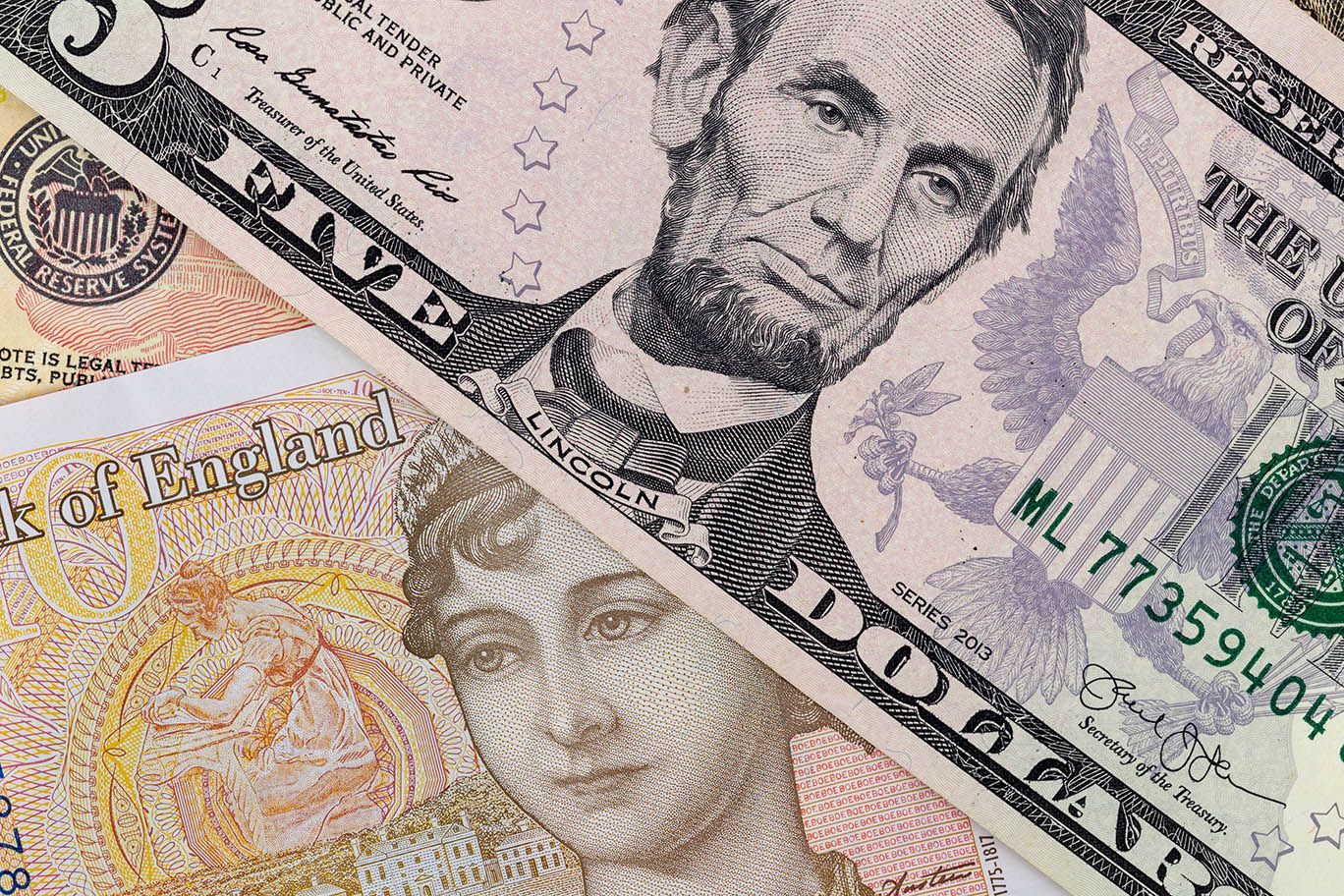Pound-Dollar Rate Outperforms after U.S. Economic Collapse and as Stock Markets Slump
- Written by: James Skinner
-

Image © Adobe Images
The Pound-to-Dollar rate outperformed Thursday as investors contemplated what rising jobless claims might mean for an economy that already outdid many rivals in a historic second-quarter collapse.
U.S. GDP slumped -32.9% in the second quarter, the Bureau of Economic Analysis says, building on a -5% decline from the prior period although not quite as bad as the consensus that was looking for a -35% fall.
Personal consumption, exports, private inventory investment, nonresidential fixed investment, residential fixed investment as well as and state and local government spending all fell sharply and so much so they weren't anywhere near offset by historic increases in federal spending and a reduction of imports.
The U.S. collapse dwarfed the 10.1% contraction seen in Germany and even outdoes the estimated -18.2% decline that consensus envisages for the UK, which had the worst coronavirus outbreak in Europe and was thought to have suffered most owing to its services heavy economy.
"Households had money to spend, as government benefits lifted incomes sharply, but the savings rate jumped to over 25% as so many avenues for spending were restricted. Business investment wasn’t quite as weak as we expected," says Avery Shenfeld, chief economist at CIBC Capital Markets. "For consumers, government decisions over extended benefits, as well as the control of the virus needed to keep retail and service outlets open, will be key."

Above: Pound-to-Dollar rate alongside S&P 500 index futures (orange line, lext axis) at 15 minutes intervals.
U.S. GDP data came at the same time as the Department of Labor said new unemployment claims rose by 1.434 million in the week ending July 25, an increase from an upwardly-revised 1.416 million in the prior week.
The prior increase lifted the number of continuing unemployment insurance claims, which is what matters for official estimates of the unemployment rate, by 867k to 17.018 million. Meanwhile, in the week ending July 11, 12.413 million were claiming benefits specifically for reasons related to the coronavirus.
Jobless claims have now seen two consecutive weeks in which they rose with increased momentum rather than decreased momentum, and mostly as a result of a so-far failed coronavirus containment effort. Fears are that renewed restrictions on acitivity and falling confidence may undermine the third-quarter recovery.
"The increase in initial jobless claims was smaller than we expected, but the jump in continuing claims - which have been a much better guide to payrolls in recent months - was rather bigger," says Ian Shepherdson, chief economist at Pantheon Macroeconomics. "Activity at the end of the quarter was much higher than the average across the quarter as a whole, so GDP growth in Q3 will benefit from a hugely favorable base effect."

Above: Pound-to-Dollar rate alongside S&P 500 index futures (orange line, lext axis) at daily intervals.
U.S. GDP data came with stock markets under pressure as American lawmakers risked pulling a fiscal rug out from underneath households' feet, while equity markets cratered in Europe amid renewed concerns about the coronavirus and poor corporate earnings in some parts.
It also came amid a wave of profit taking in Dollar exchange rates that took hold hours after Wednesday's Fed policy statement, but which lifted the greenback against nearly all major developed and emerging market currencies.
The Pound-to-Dollar rate did not participate in widespread declines for risk currencies, and instead climbed above the 1.30 handle, which could ultimately pave the way for a challenge of 1.3186 according to technical analysts.
"GBP/USD has maintained upside pressure and is currently on course for 1.3186 the 2015-2020 downtrend. We have a warning signal on the daily chart so will either sell rallies to here or attempt to buy the dips," says Karen Jones, head of technical analysis for currencies, commodities and bonds at Commerzbank. "Dips lower are expected to find initial support at the 200 day ma at 1.2699 and remain contained by the 1.2517 support line."

Above: Pound-to-Dollar rate alongside Dollar Index index (orange line, lext axis) at weekly intervals.
Pound Sterling has been an unlikely winner this week, if not hero for having offered investors refuge from a beaten and bruised Dollar that's fallen from favour with the market at a rate of knots and in short time over recent weeks.
The Pound-to-Dollar rate may be benefitting from a positive technical backdrop and tailwind of support whipped up last Friday when often-unreliable IHS Markit PMI surveys pulled ahead of their Eurozone counterparts and retails sales recovered much of their coronavirus-induced losses.
These numbers followed a lengthy period of underperformance by the British currency and came amid a favourable divergence in epidemic curves on either side of the English Channel that has garnered attention this week but which doesn't necessarily say very much at all about the outlook for Sterling.
BofA Global Research downgraded forecasts for the Pound-to-Dollar rate this week while others are looking for Dollar weakness to keep the pair, and others, supported or to even lift them further.
"The recent USD weakness has been focussed in the EUR and related currencies. We think that this link is a bit stretched. A higher liquidity world should favour the AUD, NZD and Asian currencies, and this is where we think the next leg of USD weakness may show itself," says Daniel Been, head of FX research at ANZ, who forecasts a Pound-to-Dollar rate of 1.30 for the end of September and 1.31 by year-end.










